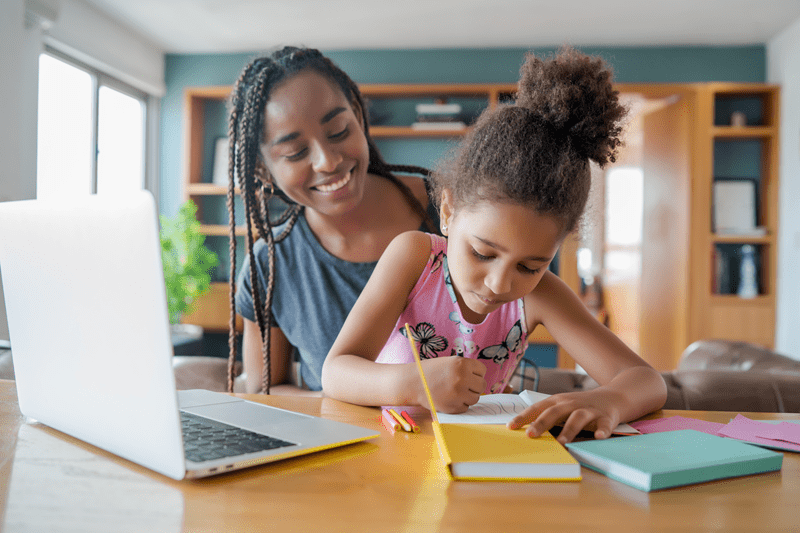Homeschooling Trends And The Shift To Flexible Learning

Parents are rethinking the traditional school system. The recent rise in homeschooling trends shows a clear shift. Families want more control over how and where their kids learn. They want flexible education that supports personal goals instead of forcing everyone into the same routine.
This shift did not happen by accident. When schools closed during the pandemic, millions of students tried online learning for the first time. Families saw the benefits. Less time wasted on commuting. More independence. Better focus on real subjects instead of rigid schedules.
Today, homeschooling trends are growing faster than private or public school enrollments in many states. Parents are combining online learning, hybrid schools and virtual classrooms to create a personalized learning setup. They like having the freedom to build routines that match their child’s pace.
Homeschooling no longer looks like sitting at a kitchen table for six hours. It is structured, planned and supported by digital tools. Many students join homeschool groups, attend hybrid schools a few days a week and take classes through virtual classrooms. This level of flexibility is something traditional schools struggle to offer.
Parents are asking one big question. Does the school system serve the student or does the student serve the system? Homeschooling trends show that families are choosing option one.
Why Homeschooling Trends Are Increasing
Families are choosing homeschooling because they want:
- Better balance between daily life and education
- More customized curriculum
- Less pressure and more focus on real learning
- Control over the learning environment
Homeschooling gives parents the ability to design learning around the student. Instead of adjusting to school rules, the learning process adjusts to the child.
Three reasons stand out:
1. Online learning opened the door
Online learning became a natural part of education during lockdowns. Kids attended classes through virtual classrooms. Many parents realized that their child learned better at home. They saw less stress and more productivity.
Online learning gives students access to expert teachers, recorded lessons and interactive training. It supports homeschooling because students can learn at their own speed. The flexibility is hard to beat.
2. Hybrid schools offer the best of both worlds
Hybrid schools combine classroom education with at-home learning. Students may attend classes twice a week and complete assignments through online learning the rest of the week. Hybrid schools mean parents do not need to choose between full homeschooling and full traditional schooling.
This model supports students who need structure but also benefit from flexibility. Hybrid schools are becoming more popular as part of homeschooling trends because they create a balance between social interaction and independent study.
3. Flexible education reduces unnecessary pressure
Flexible education gives students space to learn in a way that fits their reality. No rushing in the morning. No one size fits all methods. Flexible education respects the unique learning speed of each student.
Many parents say that flexible education helped their children enjoy learning again. When kids stop feeling trapped by routine, curiosity grows.
Must Read: Kolb's Learning Styles: A Clear Guide to How We Learn

Online Learning Is Fueling Homeschool Growth
Online learning is not a backup solution anymore. It is part of regular schooling. Students attend virtual classrooms, complete assignments online and interact through learning platforms.
Here is how online learning supports homeschooling trends:
- Students get access to video lessons anytime
- Parents get guidance without doing everything themselves
- Students learn accountability through structured tasks
Online learning reduces pressure on parents. They do not have to know every subject. They just guide the process. The digital lessons handle instruction.
When used correctly, online learning turns homeschooling into an efficient routine. Students can rewatch lessons, pause lectures, and ask questions in virtual classrooms. This level of control helps them understand complex topics better.
Homeschooling Trends And The Rise Of Hybrid Schools
Hybrid schools are one of the biggest results of homeschooling trends. These schools give families flexibility along with professional teaching support. Students attend physical classrooms for certain activities and continue learning from home through online learning.
Parents love hybrid schools because:
- Students get social interaction
- Independent learning teaches responsibility
- Flexible schedules reduce stress
Hybrid schools align perfectly with flexible education. They also make the transition from traditional schooling to homeschooling smoother. Many students who start with hybrid schools often shift to full homeschooling later because they enjoy the flexibility.
Hybrid schools support parents who cannot commit to full homeschooling but still want more control than traditional schools offer.
More to Discover: Microlearning Strategy for Effective Child Development
Virtual Classrooms Are The New Normal
Virtual classrooms are not just a temporary trend. They are now a core part of flexible education. Students can interact with teachers and classmates in real time. They can collaborate, ask questions and present projects.
Here is why virtual classrooms matter in homeschooling trends:
- Real-time interaction keeps learning engaging
- Students develop communication skills
- Classes feel structured without rigid schedules
Virtual classrooms also make learning more accessible. Students can join from anywhere. No travel. No dress code. No unnecessary rules. The focus stays on learning.
Virtual classrooms help parents stay hands off. They just manage schedules while teachers handle lessons. Combined with hybrid schools and online learning, virtual classrooms create an efficient ecosystem for modern education.
Flexible Education Helps Students Learn Better
The biggest strength of homeschooling trends is flexibility. Flexible education allows students to:
- Spend more time on subjects they enjoy
- Move at their pace
- Learn through projects instead of memorizing
Traditional schooling works on a strict timeline. Flexible education works on learning milestones. Students are not forced to move ahead if they do not understand something. They also are not held back if they learn quicker.
Flexible education prepares students for real life. The world rewards problem-solving and adaptability. Flexible learning gives students those skills from a young age.
You may like: Best Educational Apps & Games for Kids | Top Picks
Final Thoughts
Homeschooling trends are changing how people view education. The shift comes from frustration with outdated systems and a desire for flexibility. Families are choosing what works best for their children rather than forcing them into rigid structures.
Online learning, hybrid schools, and virtual classrooms are giving students choices. Flexible education respects the student instead of the system. Learning becomes personal. Students become confident and independent.
Homeschooling trends show one clear message. Education should not limit students. It should empower them.
This content was created by AI
